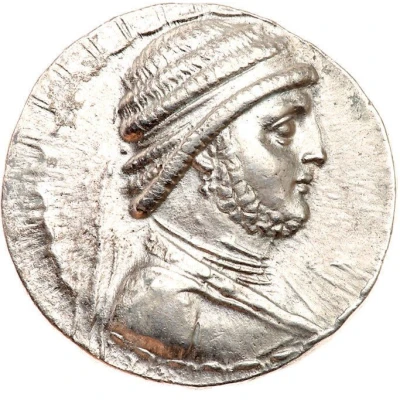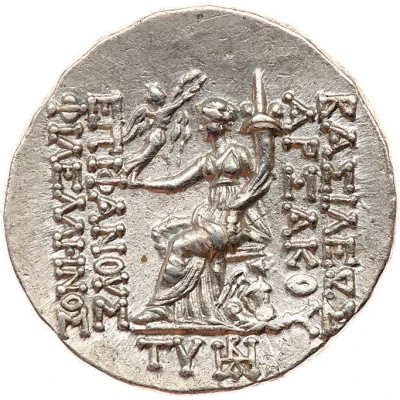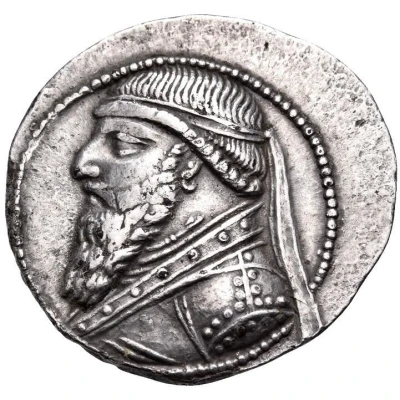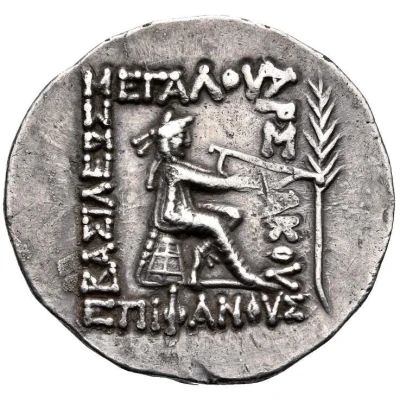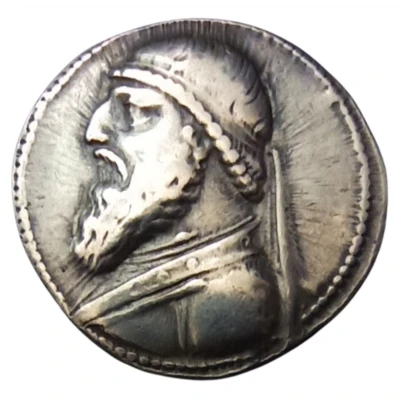


© Parthian-Shoot (CC BY-NC-SA)
Tetradrachm - Mithridates II 121 BC - 91 BC
| Silver | 16.05 g | 29.8 mm |
| Issuer | Parthian Empire (Parthian Empire (247 BC - 224 AD)) |
|---|---|
| King | Mithridates II (123 BC - 88 BC) |
| Type | Standard circulation coin |
| Years | 121 BC - 91 BC |
| Value | Tetradrachm (4) |
| Currency | Drachm (247 BC-224 AD) |
| Composition | Silver |
| Weight | 16.05 g |
| Diameter | 29.8 mm |
| Shape | Round (irregular) |
| Technique | Hammered |
| Orientation | Coin alignment ↑↓ |
| Demonetized | Yes |
| Updated | 2024-10-10 |
| Numista | N#388576 |
|---|---|
| Rarity index | 97% |
Reverse
Arsaces seated on the omphalos wearing khandis and bashlik holding a bow in his hand. Around it, Greek legend in 4 lines. Materialized ground.
Script: Greek
Lettering: BAΣIΛEΩΣ MEΓAΛoY APΣAKoY EΠIΦANoYΣ
Edge
Plain
Comment
Different variants with or without palms, with or without monogram in exergue.
Interesting fact
One interesting fact about the Tetradrachm coin of Mithridates II from the Parthian Empire is that it features a unique blend of Greek and Persian influences in its design. The obverse side of the coin depicts the king's portrait, while the reverse side shows a seated goddess, likely Artemis, with a crescent moon and a star above her head. This fusion of Greek and Persian elements reflects the cultural exchange and syncretism that occurred during the Hellenistic period, where Greek and Persian cultures interacted and influenced each other.
